Text

totally planning on finishing The Mechanics of Automail at some point, but I realized I haven’t, like, ever shared any of my art either. Was gonna save all of it for after the mechanics post was completed but who knows how long my fic will be on hiatus soooo
HAVE SOME RESEMBOOL TRIO!
#BecauseTheyreSoFreakingCute#IveGotLotsMoreWhereThatCameFrom#anime#fma#fmab#edward elric#alphonse elric#winry rockbell
10 notes
·
View notes
Text
The Mechanics of Automail
Table of Contents
A TYPICAL RECOVERY
A typical automail recovery and rehabilitation takes at least three years to complete. During this time, the outfittee must undergo intense physical and mental training to successfully adapt to their automail, before they can say they have complete mastery of the mechanical limb(s).
(STOP HERE FOR SIMPLE THINGS CH 16 SPOILERS)
There are multiple facets to automail rehabilitation, not just the limbs themselves. Mechanics outline plans for not only prosthetic progression, but exercise, diet, port maintenance, and prosthetic maintenance. Immediately following their body’s acceptance of the automail, the patient will be kept from strenuous activity until three weeks post surgery, when their cast(s) can be removed. Then, the first stage of automail attachments can be implemented.
LOWER LIMB AUTOMAIL
(It should be noted that each figure I have drawn in this section is specified to Edward Elric, and as such, the timeline written on the page is shorter than a typical automail patient. I will note how long a normal period lasts following each figure.)
The first stage of automail, at first glance, does not appear to have much to do with the gleaming metal limbs associated with the term. In fact, it is simply a tool for determining whether or not the outfittee’s port(s) can handle bearing weight.

As seen in the image above, stage one automail is not connected to the nervous system, and therefore causes no pain during docking. The first attachment weighs about 10lbs, and is used during exercise for five days.
Stage one automail is also actually present during each consecutive stage, despite its name as “stage one”. As the patient moves up from stage to stage, they will receive an increased version of stage one automail between each (i.e. when stage three is removed, a heavier form of stage one is attached to test muscle strength before stage four can be used). This process ensures the outfittee never moves to the next stage before they’re ready.
The second stage of automail consists of a simple, non mechanical prosthesis. Its only unique feature that separates it from a non-automail prosthesis is a special socket and lock that connects to the patient’s port.

In a typical automail recovery, stage two will be used for 3-6 weeks. Like any non-automail prosthesis, it can be removed whenever necessary, and is recommended to be used sparingly for at least two weeks. Afterward, it is up to the patient and mechanic to decide how often to use their leg, as their port continues to adjust to use and may still be susceptible to inflammation and severe pain. Once the patient has used stage two consistently for a week, they can test a modified stage one weight and move on to stage three.
TUMBLR WILL BE UPDATED WITH THE UPLOAD OF CHAPTER 18! STAY TUNED!
#anime#fullmetal alchemist#fma#fmab#edward elric#automail#when you're just writing a fanfic and end up making an entire thesis about a made up medical procedure#why did i spend so much time on this#not a doctor#headcanon#still updating this post
20 notes
·
View notes
Text
The Mechanics of Automail
Table of Contents
PART 2: REHABILITATION
COMPLICATIONS
(spoilers for chapter 14 of Simple Things)
The first week following automail surgery is the most crucial for the new outfittee. It’s during this week that the patient and mechanic learn how the body is going to respond to automail, and that only leaves two possible outcomes: rejection or acceptance.
There is about a ten percent chance for every automail patient that their body will not accept their automail within the week. If this is the case, it will need to be surgically removed, and chances of it working in the future if the operation is ever redone is cut in half. There are many reasons for rejection, but the most common is the most simple: infection. The invasion of foreign metals triggers the body to try and fight it as if diseased. White blood cells elevate, temperature elevates, vomiting persists, and the incisions often become irritated and swollen. Even the smallest bit of impurity in the system can lead to serious infection. This is why the patient must be quarantined for at least twenty four hours following surgery.
The majority of automail patients battle infection following surgery, but the majority also overcome it within twenty four to seventy two hours. Even if the patient is clear from infection, they must still be monitored closely for the full seven days in case it comes back. Age and prior health play a role in the body’s response, as children and those over fifty tend to see more complications.
If rejection occurs, metrics for removal vary from mechanic to mechanic, but the general consensus is to allow the patient a chance to overcome it for the full seven days, unless their life is in danger. Life threatening situations include sepsis, excessive bleeding, or temperatures over 105 degrees.
In my timeline for FMA, Edward suffers from severe complications following his automail operation. Due mostly to his age and size, he gets hit harder than most by the fever and infection, and nearly experiences complete rejection. He is incoherent with sickness for the majority of that time, and just as mentally distressed as physically. It’s only on the morning of day seven that his fever finally breaks, just when all hope was nearly lost of automail acceptance.
Now that the patient has accepted their automail, their rehabilitation can truly begin…
#anime#fma#fmab#fullmetal alchemist#edward elric#automail#fanfic#when you're just writing a fanfic and end up making an entire thesis about a made up medical procedure#not a doctor#just a crazy fangirl
12 notes
·
View notes
Text
The Mechanics of Automail
Table of Contents
PART ONE: PLANNING AND SURGERY
THE OPERATION
(spoilers for chapter 13 of Simple Things)
Automail installation is a long, grueling operation, especially for patients receiving multiple ports. Before the operation itself can even begin, the patient, the surgeons, and the operating room must be entirely sterile. Risk of infection is extremely high for automail patients, and thus they must be treated with the utmost caution.
Once sterilization is ensured, the operation can begin. Automail surgery is broken into four stages: excavation, wiring, monitoring, and infrastructure. During the first and third stages, the patient can be either asleep or under the influence of heavy painkillers, but during the second stage, they must be awake and cognizant.
The first stage, excavation, involves carving out the location for the incoming port. For complete automail arms, this involves the glenoid cavity (shoulder socket), and for above-knee legs, this involves the femur. Other common locations include the humerus, radius/ulna, and tibia/fibula.
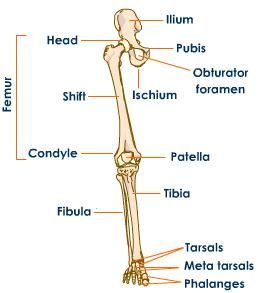
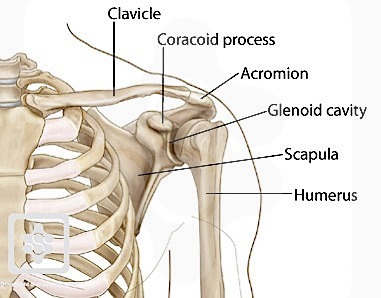
Figure 1: bones in human shoulder and leg
Depending on bone damage and necessity, a shoulder outfittee may need further amputation to fit their port, but recent advances in mechanics have cut this need by sixty percent. During excavation, the surrounding muscle and tissue of the port site is cut and opened, with excess tissue being removed. The bone can also be cut as needed, if access to the patients nerves is restricted.
Once excavation is complete, the patient is either woken from anesthesia or weaned off of drugs until fully conscious in preparation of phase two. Wiring involves the direct manipulation of the nervous system, and as such, needs the patient’s complete awareness.
For wiring from the shoulder, the surgeon must separate the nerves in the brachial plexus into three easily manipulated sections. Most commonly, this is into the branches that would have become the axillary, ulnar/median, and musculocutaneous/radial nerves in the arm. These specific nerves are chosen for optimal motor control of future automail. The axillary primarily controls the shoulder and upper arm, the ulnar and median primarily control the forearm and hand, and the musculocutaneous and radial primarily control the elbow and wrist; all of these combined can give the outfittee an impressive range of control when wired correctly.
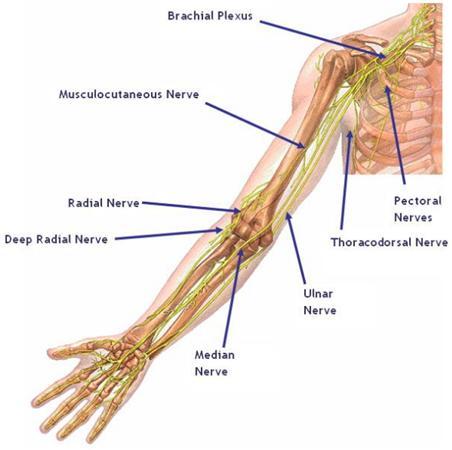
Figure 2: nerves in human arm
The nerves are kept in their natural place below the clavicle and separated into three sections. Each section is then fed into their first piece of automail- a small metal cylinder outfitted with amplifiers that will hear the nerve signals and amplify them. The cylinders are then capped, and with the nerves safe, wired to plugs. The plugs end externally, just outside of the shoulder, and are the outlets the patient’s prosthetic will eventually connect to.
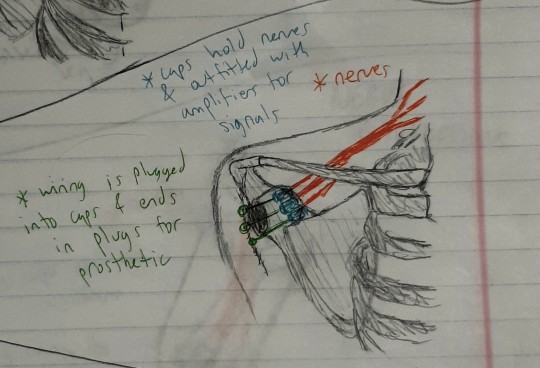
Figure 3: shoulder wiring
The process is similar for lower limb nerve wiring, adjusted to fit the nervous system of the leg. There are fewer major nerves in the leg than in the shoulder, as they don’t branch out much until the knee. If the patient’s amputation is above the knee, then the wiring is completed solely through the sciatic nerve and its small branches. If the amputation is below the knee, then the wiring is completed through the tibial and fibular nerves and their branches. Otherwise, wiring remains the same, with capped amplifiers and external plugs being installed.
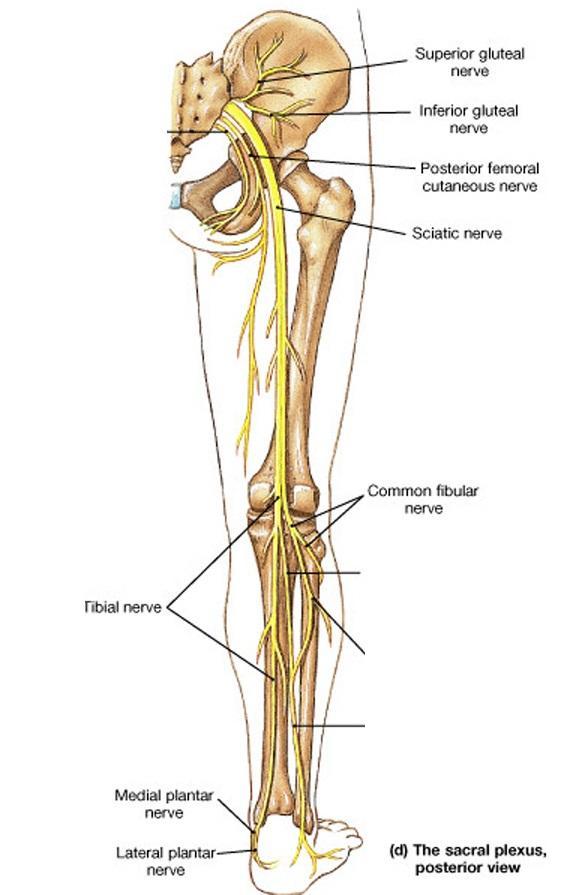
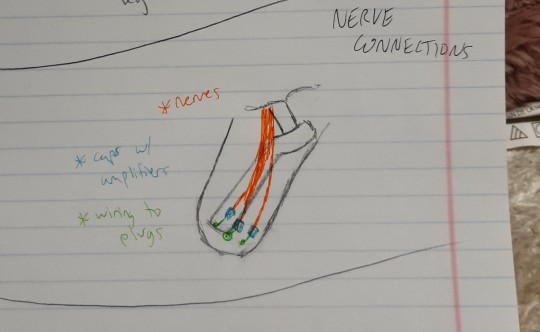
Figure 4: nerves in human leg and wiring
As for care of the patient during wiring, constant monitoring is necessary. The patient is the key to successful wiring: only they can tell the surgeon if something is wrong. If at any point during the operation, the patient experiences a loss of sensation, then the operation must be aborted. However, the patient can only accurately report a loss of sensation if they are conscious and not under the influence of opioids; as such, wiring is an extremely excruciating experience. The stress of stage two commonly leads to fever and vomiting, and in serious cases, complete mental breakdown. Luckily, once wiring is complete, the patient can be put under anesthesia again, and phase three can begin.
Phase three, monitoring, consists of a waiting period between wiring and infrastructure. During this time a monitoring system is plugged into the patient’s new port(s) to keep track of their blood pressure and nerve/muscular activity. Despite the danger zone for automail lasting a week post surgery, the first signs of port rejection will show up immediately after wiring. It is essential that the patient is watched for at least thirty minutes during this stage to ensure it is safe to continue surgery. If any signs of rejection show up, the operation must be aborted. If the patient appears stable, then they can move on to stage four. The monitor(s) can be removed, with caution to the patient’s reaction, as removal often triggers further nausea and vomiting.
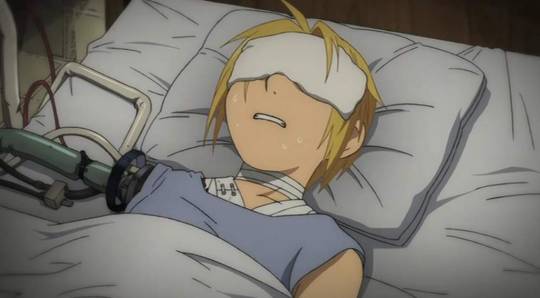
I came up with stage three due to the inclusion of the scene pictured above, when Ed first questions if Al hates him. I was always wondering ‘what the heck is the purpose of those machines attached to him?’ and decided they had to be doing something, rather than just the obvious answer that they look automail-y and important and were drawn in without much thought to their purpose. Thus, I came up with the purpose of patient monitoring.
Stage four, infrastructure, builds the internal support system for the port. Despite how a complete automail port appears, the only permanent piece is a metal ring bolted into around the nerve outlets.
This was concluded due to three images in Volume 27 of the manga, when Ed’s automail is blown apart during his battle with Father. In the images, you can clearly see a single incision on his shoulder where the automail is plugged in, and a ring of metal around it.
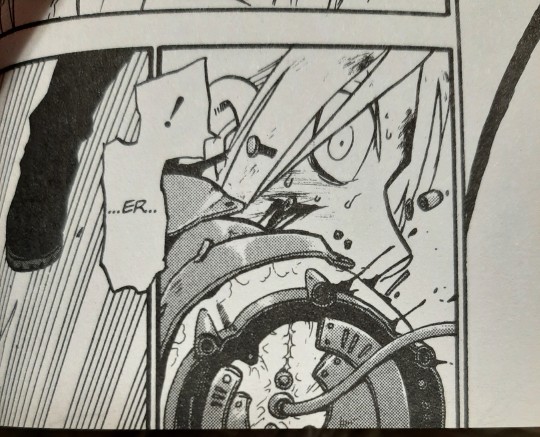
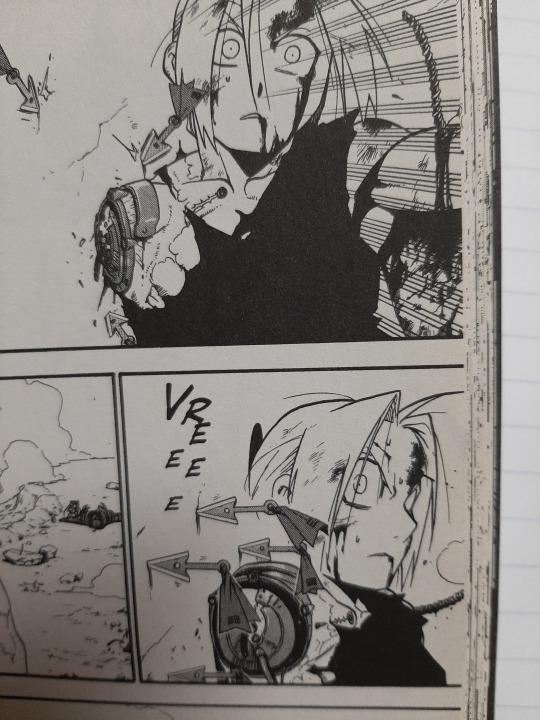
In these panels, you can see the port in its entirety, especially in the first one. Obviously, only Arakawa herself knows for certain how automail works, but from what I can guess based on these drawings, there are three small nerve outlets, and one piece bolted into the body around them. I assume the leg is done the same way. The permanent piece appears to have five spots where it is connected to the shoulder, which I will detail later in my own drawings.
Additionally, in Volume 3, we learn that the bulky metal guard covering Ed’s chest is removable, as he spends several days without it while the Rockbells fix his arm and leg.

I also did research on metal and the body, and learned that the fusion of metal to skin is physically impossible, as any tissue subjected to attempted cauterization will die. However, metal implants are commonly used to fix broken bones, so the permanent pieces of automail must be held in place with pins and screws.
To build the internal structure of a shoulder based automail port, incisions are made along the trapezius muscle (the top of the shoulder), the collarbone, the acromion, the shoulder blade, and a front rib. Each of these locations will house a metal pin and bolt, anchored into the bone and ending in a circular pattern around the nerve outlets. Pins in the trapezius, acromion, and rib are completely internal. However, the bolts holding the pins in the collarbone and shoulder blade are internal and external, as they will eventually be the anchors for the patient’s shoulder guard.
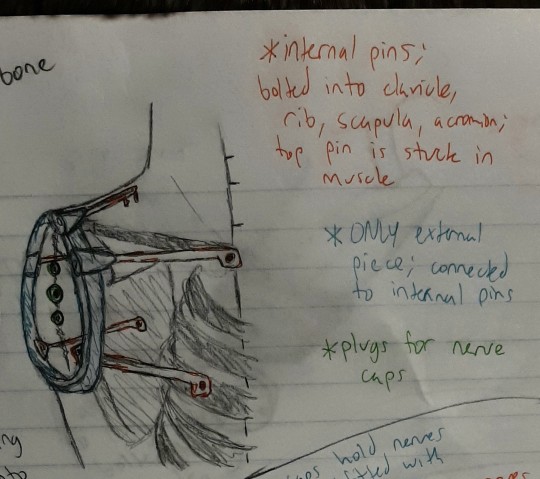
The permanent structure of a leg port is similar. A rongeur is used to drill a hole through the leg bone, either the femur or tibia/fibula depending on the location of the port. A metal rod is placed through the bone and anchored on either side of the leg, then two smaller pins are fed vertically through the muscle for further support.

Any open incisions are closed and bandaged, and the operation is complete. The patient’s monitor(s) are plugged in again, and an immobilizing agent is added to the patient’s IV. This agent will temporarily paralyze the patient, so they cannot disturb the surgical site(s) while their anesthetic wears off. By the time the patient is awake, the immobilizer will have well begun wearing off, so as not to frighten them. Now, all that’s left is to see how the patient heals in the upcoming week.
TO BE CONTINUED IN PART TWO
#anime#fullmetal alchemist#fma#fmab#automail#edward elric#when you're just writing a fanfic and end up making an entire thesis about a made up medical procedure#why did i spend so much time on this#not a doctor#headcanon
132 notes
·
View notes
Text
The Mechanics of Automail
Table of Contents
PART ONE: PLANNING AND SURGERY
Pre-Surgical Readiness
Before a person can be outfitted with automail, it must be determined if they are even eligible to receive it.
In general, a potential outfittee must be at least sixteen years of age and in good physical health to be considered. For prospective patients younger than sixteen, parental consent is required. Oftentimes, a young patient will meet with a mechanic and receive basic prosthetics until they are of age to decide if automail is right for them. Even then, most outfittees wait until around the age of twenty to undergo automail surgery, so their bodies have mostly finished growing.
If a child or adolescent does receive consent for automail, they will likely need to undergo multiple corrective surgeries over the years as they continue to grow. The static internal structure of automail can stunt bone growth and even break during growth spurts if not adjusted. This is why most children and parents opt for standard prostheses until the growing process is complete, as well as why child automail is a bit of a taboo in the field.
As for physical health, a potential outfittee must be in good condition to undergo surgery. As such, one cannot be outfitted immediately following amputation. At least two weeks of healing are required to even consider it, and oftentimes, the patient will train with standard lower-limb prosthetics before going under the knife.
The patient cannot be sick or injured in order to receive surgery, and preferably would be in acceptable mental health as well. Malnutrition, viruses, infection, and even serious depression are tickets to immediate denial for surgery. Of course, surgery can always be done once the patient recovers.
So What About Ed?
In my timeline for FMA, Edward’s journey from human transmutation to automail is much longer than most fans have depicted it.
Edward and Alphonse commit the taboo in early-mid August, after being back in school for only a few days. Edward, having flatlined on the operating table, is unconscious for six days following his near-death experience, then suffers from a half-conscious, half-comatose state for another eight days. In week three, he has the stitches removed from his leg, but can’t have the ones in his shoulder taken out until at least a month later.
Because of the risk of his shoulder wound reopening, he cannot be fitted for a prosthetic leg like most amputees can once the incision heals. (I made this decision based on the fact that the bandages on his shoulder remain even after the ones on his leg are no longer seen [Brotherhood, ep. 2]. In real life, lower limb amputees are often healed within three weeks of amputation, and can begin the prosthetic fitting process soon after. But, with a second, much more vulnerable wound, Ed could not take part in this typical sequence of events.) As such, he can only be mobile by wheelchair, and it is also during this time that he begins to fully understand what’s happened. As seen in BH and the manga, he grows severely depressed, rooted in his guilt over what he did to Alphonse and his mother. This depression, mixed with the frustration of dependency and pretty much just being stuck in his thoughts all day, deteriorates his condition further. I imagine by the worst of it, he’s malnourished, sickly, even selectively mute; his poor health slows his shoulder’s healing process further, and leaves him even more dependent, worsening the depressive cycle.
In my timeline, Colonel Mustang’s visit occurs about two months after human transmutation. This means Edward has been in poor health for five weeks, and is physically incapable of handling automail surgery.
…Not that Pinako was even considering it up until this point. With child automail being such a taboo and with no parental consent to speak of, I believe the Rockbells were originally going to take the safe route and outfit Ed with a standard prosthetic leg until he turned sixteen. It’s only with his sudden interest in living again that breaks Pinako’s willpower and forces her to agree to do automail surgery.
Still, Edward’s body has been neglected for over a month and he is nowhere near ready for automail surgery. So, he has to go through intensive training for a month to prove he is serious about wanting automail, and is physically and mentally capable of handling it. This involves working with a basic prosthetic leg (which I concluded due to the existence of Arakawa’s side story “Long Night”, featuring an armless Ed using a basic leg), as well as exercise and a managed diet.
A month passes and Edward is finally ready for the operation. But just what does that entail?
#anime#fullmetal alchemist#fma#fmab#automail#edward elric#when you're just writing a fanfic and end up making an entire thesis about a made up medical procedure#why did i spend so much time on this#not a doctor#headcanon
20 notes
·
View notes
Text
The Mechanics of Automail
Table of Contents
INTRODUCTION
In the world of Fullmetal Alchemist, there are few things more intriguing than the hyper-advanced, human-powered steel prosthetics known as automail. For a universe that (mostly) stays within the limits of its early 20th century setting, having such advanced biomedical engineering is certainly interesting… but how does it work?
The manga and both anime explain the basics of automail, but as somebody who’s entirely too extra in her fandoms, “the basics” aren’t good enough for me. But it wasn’t until I started work on my fanfiction “Simple Things” that I really started to think about the logistics of automail. So, I set out on a quest to crack the secrets of automail and turn it into something any fan can understand and appreciate.
Automail is one of the most intriguing things in the FMA to me, as I’ve always had an interest in the medical field, especially in prostheses and physical therapy. But, of course, I am not a doctor. I am merely a college student who loves to research and speculate about fictional worlds. As such, all of my conclusions come from what I learned online, and are not based on personal knowledge; they are meant to make sense in the universe of Fullmetal Alchemist, not necessarily in real life.
Through countless hours of research into real life parallels, combing through each book and episode of the shows, and many, many rejected drawings, I believe I have come up with a rather comprehensive idea of every aspect of automail, and am excited to share them with you. Basic automail information is written normally, and Edward-centric headcanons are written in italics.
Without further ado, let’s get into this!
#anime#fullmetal alchemist#fma#fmab#fanfic#edward elric#automail#when you're just writing a fanfic and end up making an entire thesis about a made up medical procedure#why did i spend so much time on this#not a doctor#headcanon
13 notes
·
View notes
Text
The Mechanics of Automail
TABLE OF CONTENTS
Introduction
Part 1: Planning and Surgery
Pre-Surgical Readiness
-So What About Ed?
The Operation
Part 2: Rehabilitation
Complications
A Typical Recovery
-Lower Limb Automail
-Upper Limb Automail
Exceptions: A Look at Edward Elric
Care and Maintenance
Part 3: Understanding Mechanics
Internal Structure
Nerve Connection
Power of Prosthetics
This post is being updated as progress on my companion fanfic continues!
#anime#fullmetal alchemist#fma#fmab#automail#fanfic#edward elric#when you're just writing a fanfic and end up making an entire thesis about a made up medical procedure#why did i spend so much time on this#not a doctor#headcanon
87 notes
·
View notes